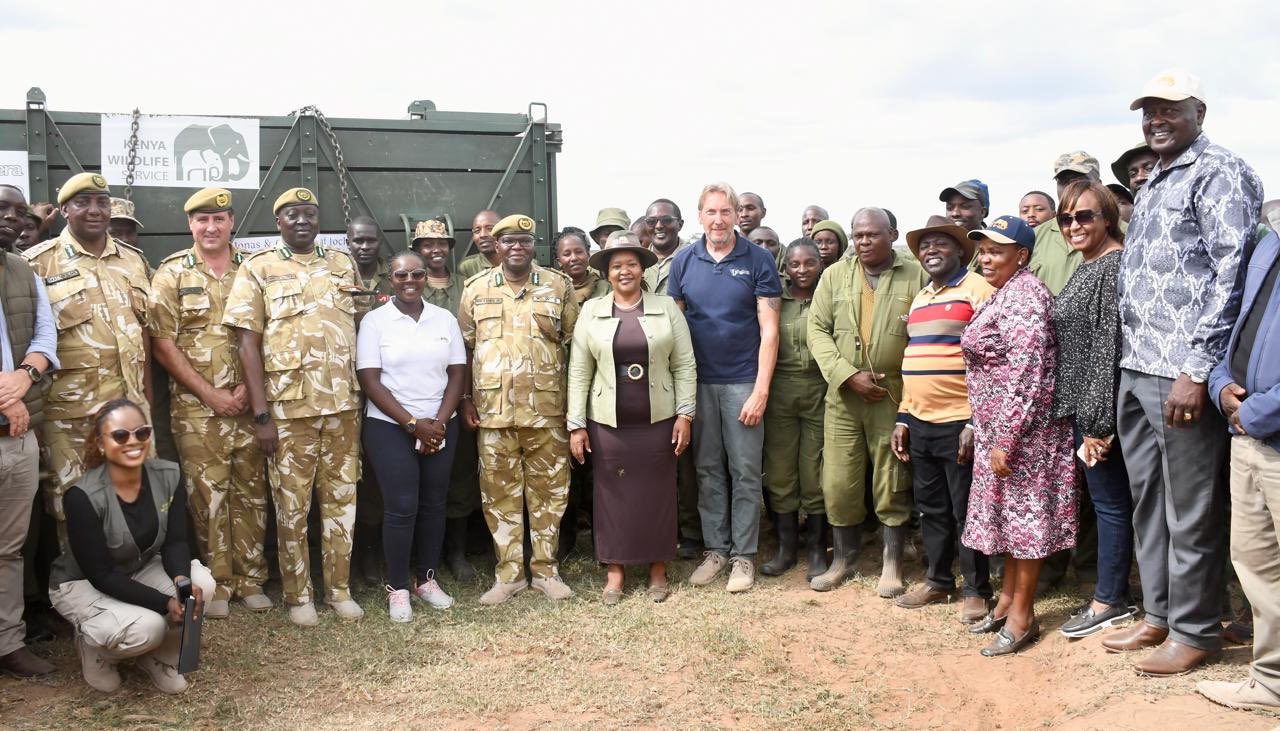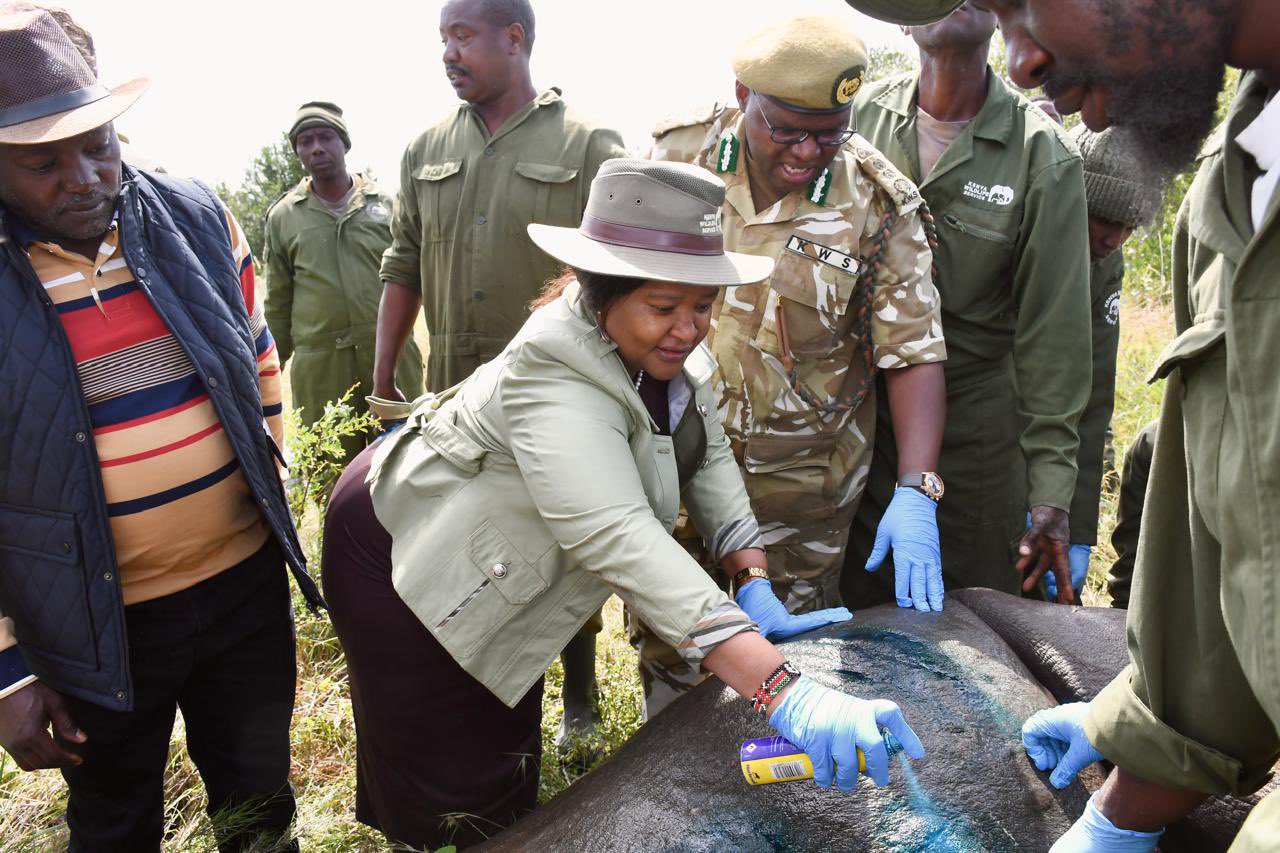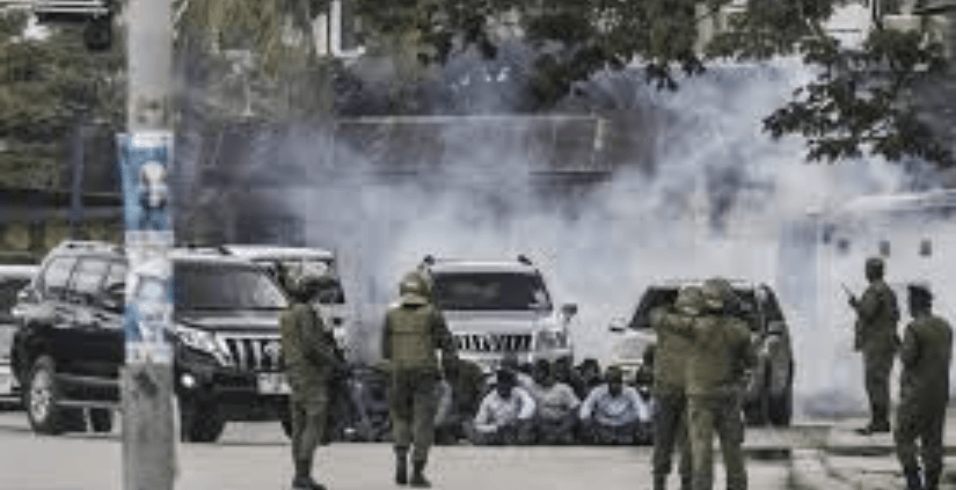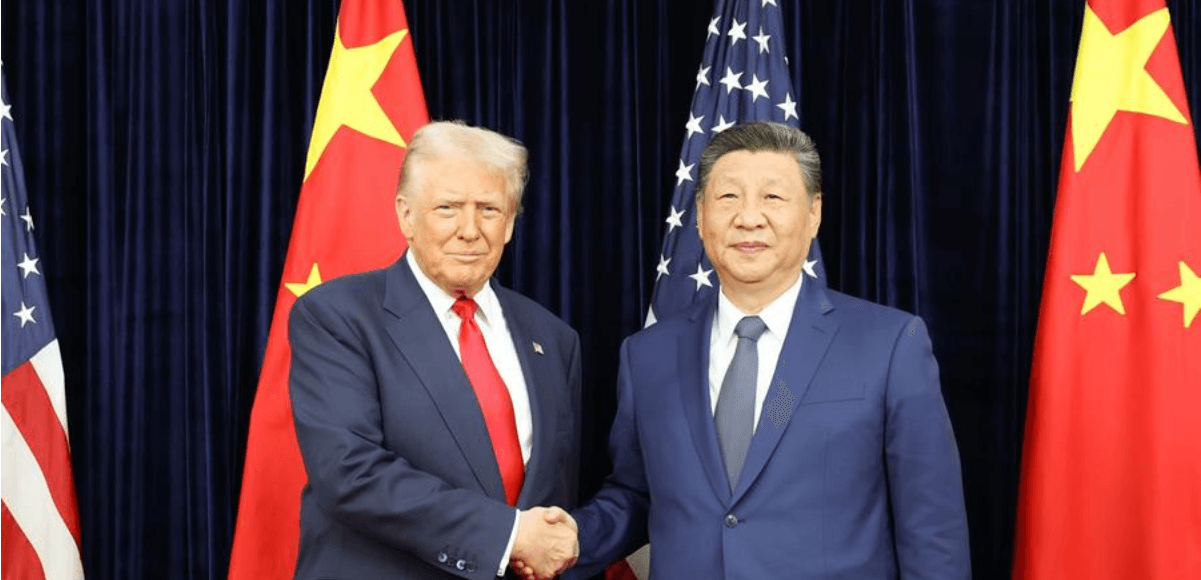
 Tourism and Wildlife Cabinet Secretary Rebecca Miano poses for a photo with KWS leadership and conservationists during the launch of the translocation exercise on May 24, 2025/KWS
Tourism and Wildlife Cabinet Secretary Rebecca Miano poses for a photo with KWS leadership and conservationists during the launch of the translocation exercise on May 24, 2025/KWSThe Kenya Wildlife Service has begun the translocation of 21 eastern black rhinos from Ol Pejeta Conservancy to Segera Conservancy, in a strategic initiative geared at enhancing conservation in the country.
The exercise is also part of a wider plan to relieve pressure on overpopulated sanctuaries, which include Lewa and Lake Nakuru.
This, while establishing Segera as a new, secure, and ecologically rich breeding ground.
Kenya is home to 80 per cent of Africa’s remaining eastern black rhinos, a responsibility the nation carries with great pride and determination.
The translocation, according to Tourism and Wildlife Cabinet Secretary Rebecca Miano, who launched the exercise, is part of the National Black Rhino Action Plan.
The goal is to increase the black rhino population in the country to 2,000 by 2037.
"As we review the Wildlife Act to better support conservation innovation and deliver tangible benefits to communities, initiatives like this demonstrate the real, lasting impact of collaborative action," she said.
KWS Director General Erustus Kanga, who was also present, emphasised the gravity of the operation.
“Today marks the climax of years of precision and dedication. Every detail has been scrutinized, because when moving black rhinos, there is no margin for error," he said.
The 18-day operation will move three rhinos at a time, allowing for rest periods between phases.
This staggered approach ensures minimal stress for the animals, with a dedicated veterinary team monitoring each rhino throughout its journey.
May’s cool, dry conditions provide an optimal climate for transport.
Segera Conservancy, a growing conservation hub in Northern Kenya, was selected for its ecological richness and security.
By establishing new breeding grounds there, KWS said it aims to enhance genetic diversity and expand rhino range into underutilized habitats.
This initiative, Miano stated, represents the strength of Kenya’s conservation model, built on public-private-community partnerships.
 Tourism and Wildlife Cabinet Secretary Rebecca Miano with other KWS officials during the event/KWS
Tourism and Wildlife Cabinet Secretary Rebecca Miano with other KWS officials during the event/KWSThe Zeitz Foundation, Ol Pejeta Conservancy, Lewa Wildlife Conservancy, and local community conservancies have all played critical roles in making this translocation possible.
Also present during the flag-off ceremony was KWS Board of Trustees chairman Lt. Gen. (Rtd) Walter Raria Koipaton and the board members.












